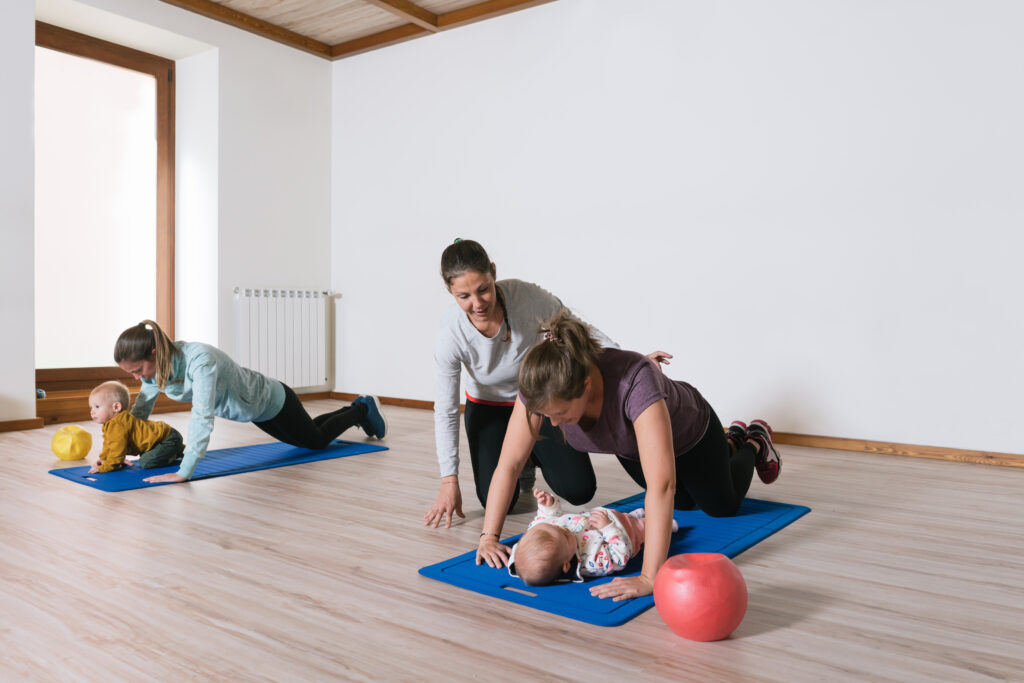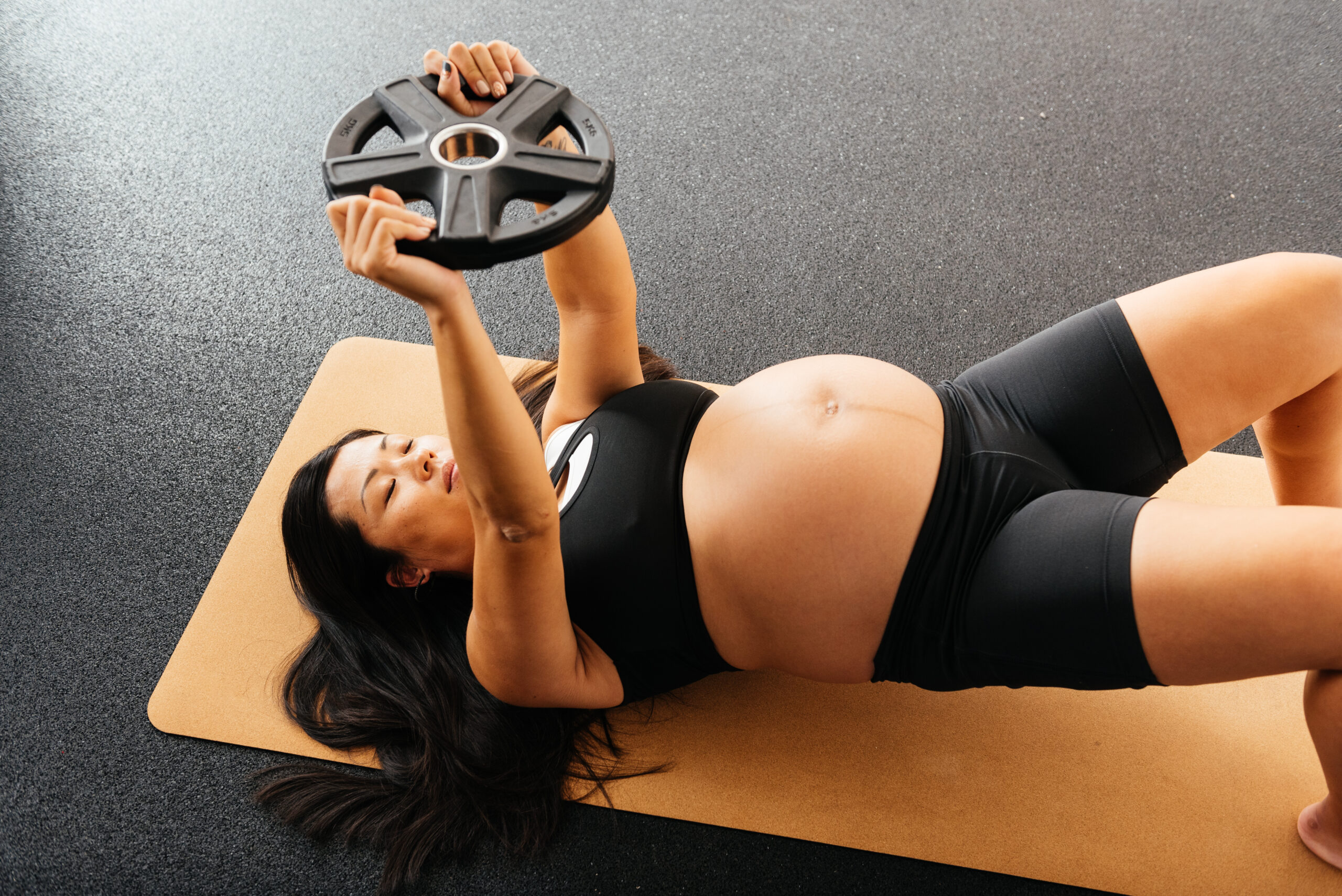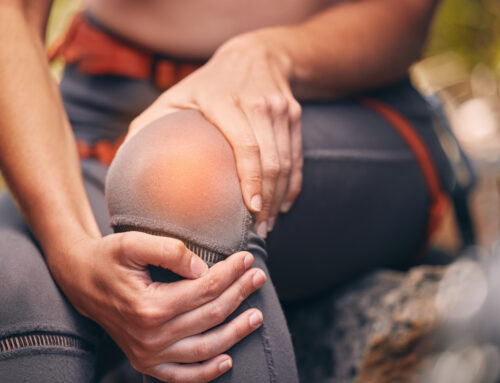Pregnancy is an incredible journey, but it also places new physical demands on the body. As your baby grows, your body undergoes changes that can lead to back pain, pelvic discomfort, core weakness, and joint instability. While these changes are normal, they don’t have to be painful or limiting—prenatal physical therapy can help manage discomfort, improve strength, and support a healthier pregnancy.
Prenatal physical therapy helps expecting mothers stay strong, mobile, and pain-free throughout pregnancy while preparing for labor, delivery, and postpartum recovery. By focusing on core stability, pelvic floor function, posture, and mobility, prenatal PT ensures your body is supported through every trimester.
READ: Unleash the Athlete Within: Reno’s Guide to Staying Strong, Fast, and Injury-Free
At Battle Born Health in Reno, NV, we help moms-to-be build strength, relieve discomfort, and move with confidence during pregnancy. In this guide, we’ll explore how prenatal physical therapy can improve your comfort, prepare your body for childbirth, and set the stage for a smoother postpartum recovery.
The Benefits of Prenatal Physical Therapy

Prenatal physical therapy is designed to support your body through the physical changes of pregnancy while preparing you for labor and postpartum recovery. A proactive approach to movement and strength can make a significant difference in reducing pain, improving mobility, and ensuring a smoother transition into motherhood.
1. Reducing Back, Hip, and Joint Pain
- As your belly grows, your center of gravity shifts, placing more strain on your lower back and hips.
- Prenatal PT focuses on stabilizing the pelvis, improving posture, and strengthening key muscle groups to reduce discomfort.
- Gentle manual therapy and targeted exercises can alleviate sciatica, SI joint pain, and pelvic girdle pain.
2. Strengthening the Core and Pelvic Floor
- A strong core and pelvic floor provide better support for your growing baby, reducing stress on your spine and hips.
- Physical therapy includes core-safe exercises that prevent diastasis recti (abdominal separation) and improve pelvic stability.
- Learning proper breathing and core activation techniques can also aid in labor and postpartum recovery.
3. Improving Posture and Movement Mechanics
- The weight of pregnancy often leads to poor posture, rounded shoulders, and excessive lower back arching.
- A physical therapist can guide you through postural corrections, movement modifications, and mobility drills to keep your body aligned and pain-free.
4. Preparing for Labor and Delivery
- Labor requires endurance, flexibility, and controlled breathing—all of which can be trained in prenatal PT.
- Physical therapy helps improve hip mobility, pelvic alignment, and core endurance to make delivery more efficient.
- Learning relaxation techniques, breathing strategies, and pushing mechanics can help you feel more in control during childbirth.
5. Setting the Stage for a Stronger Postpartum Recovery
- The work you do before childbirth can make a big impact on how quickly and effectively you recover after delivery.
- Strengthening muscles during pregnancy can help prevent postpartum issues like back pain, incontinence, and pelvic floor dysfunction.
- A physical therapist will also provide guidance on safe movement, lifting, and exercise for after birth.
READ: Winning the Battle Against Pain: How Reno’s Physical Therapists Keep You Thriving
Prenatal physical therapy isn’t just about fixing pain—it’s about preparing your body for one of the biggest physical events of your life. At Battle Born Health, we help expecting moms feel strong, supported, and ready for the journey ahead.
Common Pregnancy-Related Conditions Prenatal PT Can Help
Pregnancy puts unique demands on the body, often leading to discomfort, weakness, and mobility challenges. While some aches and pains may seem normal, they don’t have to be something you just “live with.” Prenatal physical therapy can help manage and even prevent many common pregnancy-related conditions, making your journey more comfortable and functional.
1. Pelvic Girdle Pain and Instability
- The pelvic joints loosen during pregnancy due to hormonal changes, leading to instability and discomfort.
- This can cause pain in the hips, lower back, and pubic area, especially when walking, standing, or shifting positions.
- Physical therapy can improve pelvic alignment, strengthen supporting muscles, and teach movement strategies to reduce pain.
2. Sciatica and Lower Back Pain
- As the belly grows, postural changes and added weight put strain on the lower back and sciatic nerve.
- Symptoms may include shooting pain down the leg, numbness, or a deep ache in the lower back and glutes.
- Prenatal PT focuses on gentle stretches, core stability exercises, and postural corrections to relieve nerve compression.
3. Diastasis Recti Prevention and Core Engagement Strategies
- Diastasis recti occurs when the abdominal muscles separate due to pregnancy-related pressure.
- This can lead to core weakness, back pain, and difficulty returning to exercise postpartum.
- A physical therapist teaches core-safe exercises and breathing techniques to prevent excessive strain on the abdomen.
4. Pelvic Floor Dysfunction and Incontinence
- Many women experience urinary leakage, pressure, or pelvic discomfort due to weakened pelvic floor muscles.
- Without proper rehab, these issues can persist after childbirth and impact daily life.
- Prenatal PT strengthens and coordinates the pelvic floor muscles, improving control and reducing symptoms.
5. Swelling, Circulation Issues, and Leg Discomfort
- Increased fluid retention and blood flow changes can cause leg swelling, varicose veins, and discomfort.
- Gentle movement exercises, stretching, and manual therapy can improve circulation and reduce fluid buildup.
Prenatal physical therapy provides targeted solutions for these common pregnancy challenges, helping you stay strong, mobile, and pain-free throughout all three trimesters.

At Battle Born Health, we create customized treatment plans to address your specific needs, ensuring a more comfortable and supported pregnancy.
See all the services we offer here
Safe and Effective Exercises for Pregnancy
Staying active during pregnancy can help reduce pain, improve mobility, and prepare the body for labor and postpartum recovery. However, not all exercises are safe or beneficial as your body changes. Prenatal physical therapy focuses on strength, stability, and mobility, ensuring you move safely while supporting your growing baby.
1. Core and Pelvic Floor Activation
- Instead of traditional ab exercises, focus on deep core engagement to support your spine and reduce the risk of diastasis recti.
- Safe exercises:
- Diaphragmatic breathing – Strengthens the deep core and pelvic floor.
- Modified bird dogs – Engages the core without excessive pressure.
- Seated pelvic tilts – Improves core activation and relieves back tension.
2. Lower Body Strength Exercises for Stability and Support
- Strong glutes, hips, and legs help stabilize the pelvis and reduce joint discomfort.
- Safe exercises:
- Squats with support – Strengthens the legs and pelvic floor.
- Glute bridges – Helps with hip stability and lower back support.
- Side-lying leg lifts – Targets the hips to improve balance and reduce strain.
3. Mobility and Stretching Techniques for Better Posture
- Pregnancy can cause tightness in the back, hips, and chest, leading to pain and stiffness.
- Safe mobility exercises:
- Cat-cow stretches – Relieves tension in the spine.
- Seated thoracic rotations – Improves upper body mobility and posture.
- Hip flexor stretches – Helps counteract postural changes from a growing belly.
4. What to Avoid During Pregnancy
- Traditional crunches or sit-ups – Can increase abdominal separation.
- High-impact jumping exercises – Adds excessive strain on the pelvic floor.
- Overextending or deep twisting movements – Can overstretch joints due to pregnancy hormones.
- Holding your breath during exercise – Can increase pressure on the core and pelvic floor.
How Prenatal PT Ensures Safe Movement
- Exercises are adjusted for each trimester, ensuring comfort and effectiveness.
- Focus is placed on breathwork, posture, and controlled movement to build strength safely.
- At Battle Born Health, we create customized exercise plans based on your needs and fitness level.
By staying active with safe, targeted exercises, you can reduce pregnancy discomfort, build strength for labor, and set yourself up for a smoother postpartum recovery.
READ: Conquering Chronic Pain: How Physical Therapy Can Help Reno Residents Thrive
How Prenatal PT Prepares You for Labor and Delivery
Labor and delivery require strength, endurance, flexibility, and breath control. Prenatal physical therapy helps train your body for childbirth, making labor more efficient and reducing the risk of complications or prolonged recovery.
1. Training for Breath Control and Pushing Mechanics
- Proper breathing techniques help reduce tension, manage contractions, and improve oxygen flow during labor.
- Physical therapy teaches:
- Diaphragmatic breathing – Helps with relaxation and core control.
- Coordinated exhalation with pushing – Reduces strain on the pelvic floor.
2. Strengthening Key Muscle Groups for Endurance and Stability
- Labor is physically demanding, requiring strong legs, core, and pelvic muscles.
- Physical therapy includes:
- Squats and lunges – Prepares the legs and pelvis for different labor positions.
- Glute and hip exercises – Supports better stability and movement during labor.
- Pelvic floor coordination – Ensures the right balance between strength and relaxation.
3. Improving Hip Mobility and Pelvic Alignment
- A mobile pelvis allows for easier baby positioning and smoother labor progression.
- Mobility drills focus on:
- Hip openers and deep squats – Encourages baby’s descent.
- Gentle spinal mobility work – Reduces tension in the lower back and pelvis.
- Pelvic tilts and rocking movements – Helps with comfort and movement during contractions.
4. How Manual Therapy and Movement Prep Ease Labor Discomfort
- Soft tissue work and gentle adjustments can reduce pelvic pain and muscle tightness leading up to labor.
- Prenatal PT helps moms feel more comfortable and in control with guided movement strategies.
Why Prenatal PT is a Game-Changer for Labor
- Helps moms feel strong and prepared, both physically and mentally.
- Reduces the likelihood of prolonged labor, tearing, or unnecessary interventions.
- Supports a faster postpartum recovery by minimizing strain on the body.
At Battle Born Health, we help expectant mothers build confidence, strength, and mobility so they can approach labor and delivery feeling empowered and prepared.
When to Start Prenatal Physical Therapy
Prenatal physical therapy can be beneficial at any stage of pregnancy, but starting early allows for better strength building, pain management, and movement preparation as your body changes. Whether you’re in your first trimester or nearing delivery, physical therapy can help you stay comfortable and active.
1. Early Pregnancy (First Trimester – Weeks 1-12)
- Focuses on building foundational strength and mobility before major body changes occur.
- Addresses pre-existing conditions (back pain, hip tightness, core weakness) that could worsen later.
- Helps develop proper breathing techniques and pelvic floor awareness early on.
2. Mid-Pregnancy (Second Trimester – Weeks 13-27)
- Adjusts posture and movement mechanics as the belly grows.
- Introduces modified strength training to prevent pain and instability.
- Works on core control and pelvic mobility to prepare for later stages.
3. Late Pregnancy (Third Trimester – Weeks 28-40)
- Focuses on labor prep techniques, including breath control and pushing mechanics.
- Addresses pelvic alignment and flexibility to encourage baby positioning.
- Uses gentle manual therapy to relieve pain and discomfort.
Signs You Should See a Prenatal Physical Therapist
- Back, hip, or pelvic pain that worsens with movement.
- Leaking urine when sneezing, coughing, or exercising.
- Feeling unstable or unbalanced while walking or standing.
- Difficulty engaging your core or concerns about diastasis recti.
- Wanting a guided, safe exercise plan for pregnancy.
How Battle Born Health Creates a Personalized Prenatal Plan
- Tailors exercises and therapy to your specific needs, fitness level, and stage of pregnancy.
- Provides one-on-one movement coaching to ensure you stay strong and mobile.
- Helps you prepare for labor, delivery, and postpartum recovery with expert guidance.
The earlier you start prenatal physical therapy, the more proactive you can be in preventing pain and building strength for a smoother pregnancy. However, it’s never too late to begin—any stage of pregnancy can benefit from guided movement and expert support.
Postpartum Benefits of Starting PT During Pregnancy

Prenatal physical therapy isn’t just about supporting a healthy pregnancy—it also plays a major role in how quickly and effectively you recover postpartum. The work you put in before birth helps lay the foundation for a smoother transition into motherhood, reducing common post-birth complications and making it easier to return to daily activities.
1. Faster Core and Pelvic Floor Recovery
- Pregnancy stretches and weakens the abdominal muscles and pelvic floor, leading to potential issues like diastasis recti or incontinence.
- Prenatal PT strengthens these areas before birth, making postpartum healing more efficient.
- Learning proper core engagement techniques during pregnancy helps with early postpartum recovery.
2. Reduced Risk of Postpartum Pain and Dysfunction
- Many new moms experience back, hip, and neck pain due to posture changes, lifting a baby, and feeding positions.
- Prenatal PT helps build strength in supporting muscles, making these daily tasks easier and less painful.
- Early mobility work reduces the chances of long-term joint stiffness and muscle tightness postpartum.
3. Easier Return to Exercise and Daily Activities
- Postpartum recovery can feel overwhelming, especially when returning to workouts.
- Prenatal PT teaches safe movement patterns that make getting back to fitness smoother.
- A strong core and pelvic floor mean less risk of injury or setbacks when resuming activity.
4. Lower Risk of Pelvic Floor Disorders
- Issues like urinary leakage, pelvic organ prolapse, and discomfort with movement can develop postpartum.
- Strengthening and properly coordinating the pelvic floor before birth reduces these risks significantly.
- Learning breathing and relaxation techniques during pregnancy helps with postpartum pelvic floor recovery.
5. Mental and Emotional Well-Being
- A strong, prepared body leads to more confidence and independence postpartum.
- Addressing pain, movement limitations, and weakness early prevents frustration and stress after birth.
- Knowing how to move safely and protect your core and pelvic floor makes motherhood easier and more enjoyable.
READ: Comprehensive Guide to Reno Physical Therapy at Battle Born Physical Therapy & Health Coaching
At Battle Born Health, we emphasize a seamless transition from pregnancy to postpartum by giving moms the tools they need to heal and regain strength. By starting PT during pregnancy, you set yourself up for a faster, healthier, and more confident recovery.
Prenatal physical therapy is one of the best ways to prepare your body for pregnancy, labor, and postpartum recovery. By focusing on core strength, pelvic floor health, mobility, and proper movement mechanics, you can reduce pain, improve stability, and set yourself up for a stronger, healthier pregnancy.
At Battle Born Health in Reno, NV, we provide personalized prenatal physical therapy programs designed to support moms-to-be at every stage of pregnancy. Whether you’re looking to prevent pain, prepare for labor, or ensure a smooth postpartum recovery, our team is here to guide you every step of the way.
A healthy pregnancy starts with taking care of your body now. With the right exercises, expert guidance, and proactive movement strategies, you can stay active, pain-free, and ready for the journey ahead.





